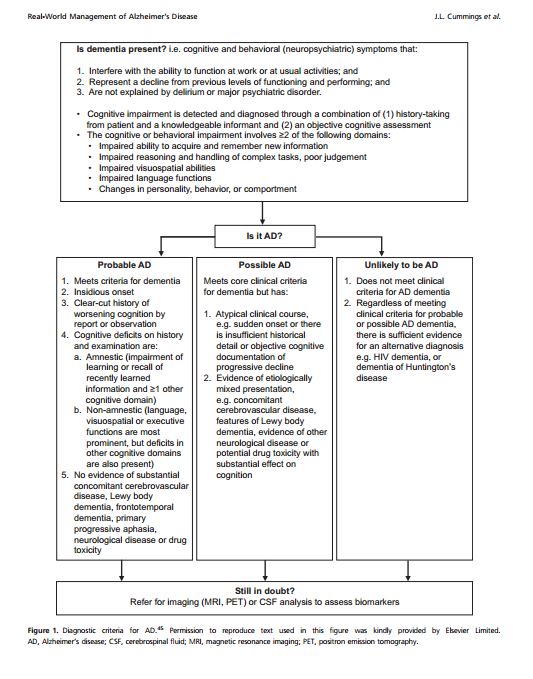What follows is from the article below [which was funded by Novartis]
Article: Ann Clin Transl Neurol. 2015 Mar;2(3):307-23. doi: 10.1002/acn3.166. Epub 2015 Jan 23. A practical algorithm for managing Alzheimer’s disease: what, when, and why? [Pubmed Abstract] [Full Text HTML] [Full Text PDF] Jeffrey L. Cummings1, Richard S. Isaacson2, Frederick A. Schmitt3 & Drew M. Velting4
1 Cleveland Clinic Lou Ruvo Center for Brain Health, Las Vegas, Nevada and Cleveland, Ohio. 2 Weill Cornell Medical College, New York, New York. 3 Sanders-Brown Center on Aging, University of Kentucky Medical Center, Lexington, Kentucky. 4 Novartis Pharmaceuticals Corporation, East Hanover, New Jersey
One
two
three
four
five
six
seven
eight
Summary
AD is one of the most challenging chronic conditions to
manage. Treatment must be individualized for the symptoms,
functional status, comorbidities, behaviors, and the
psychosocial situation of each patient, and requires regular
reassessments for changes in the patient’s and caregiver’s
medical, mental, and psychological states. Figure 2
shows an algorithm for how to manage AD in primary
care. Early diagnosis, referral to specialists, and treatment
initiation are key; as are understanding and conveying
realistic expectations of treatment. Patients respond individually
to different interventions, so clinicians should be
willing to change medications to maximize patient and
caregiver quality of life, and to engage the assistance of
other healthcare professionals (e.g., geriatricians, neurologists,
psychiatrists, psychologists, physical or occupational
therapists, social workers). It should be emphasized to
patients and caregivers that, while the progressive course
of AD cannot be reversed, lifestyle changes and medication
can delay the progression of cognitive and functional
symptoms of AD and maximize quality of life.












